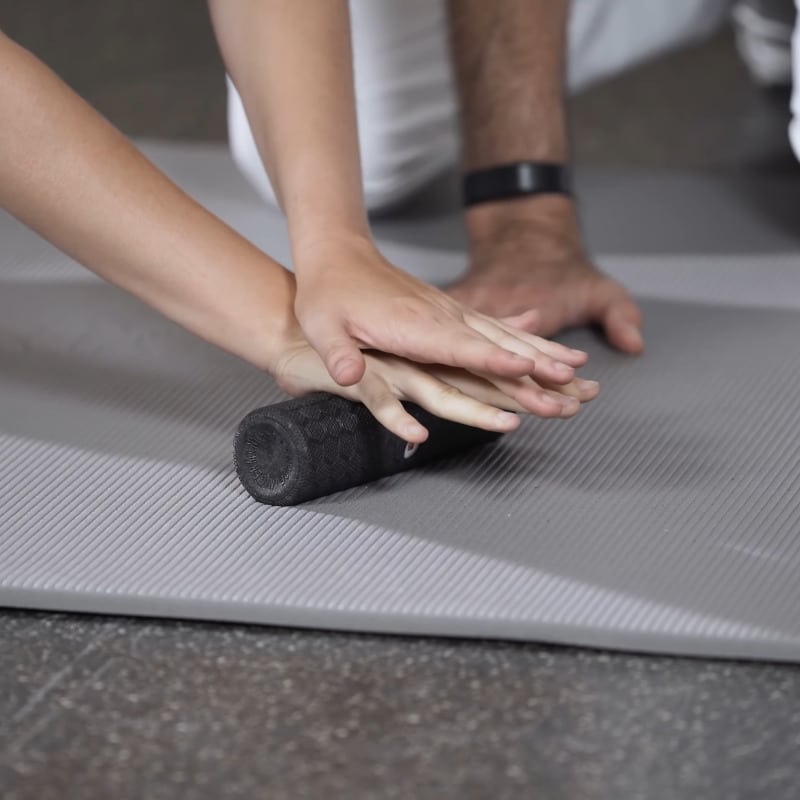Trigger finger Exercises
Body Part:
Hands & Fingers
Equipment:
Mini Foam Roller
Level:
Beginner
Body Part:
Hands & Fingers
Equipment:
Mini Foam Roller
Level:
Beginner
Have you ever gone to shake someone’s hand and realised that one of your fingers looked like it was gripping the handle of a teacup? Or maybe you’ve noticed that your ring finger is sneakily trying to make the “OK” gesture? That’s a job for your index finger! If your fingers or thumbs are sticking in a curled position, you may have developed a case of trigger finger.
Trigger finger, which your doctor calls stenosing tenosynovitis, is a condition where your fingers or thumbs freeze in a bent position as if you were pulling the trigger on a gun. When you try to straighten or bend the affected finger, you may hear a popping sound. According to a recent study, trigger finger is one of the most common causes of hand pain and dysfunction.1)
Sometimes, the cause of trigger finger is unknown. However, trigger finger can be brought on by repeated hand movements, especially if the action requires you to use your fingers and thumbs with a lot of force (like gripping an object). Repeated, forceful hand movements can inflame your flexor tendons. The flexor tendons, which run from your forearm into your hands, help your fingers contract and flex. They pass through a tendon sheath in your hands, which goes from your mid-palm to your fingertips. Flexor tendons should glide freely through the tendon sheath. If a tendon becomes swollen or inflamed, it can’t move as easily as it should through the tendon sheath. This is where the popping sound or snapping sensation comes from: an enlarged tendon pushing through a narrow sheath.
Trigger finger is most common in the ring finger and thumbs, but the condition doesn’t discriminate. It can happen in any finger, in more than one finger at a time, and in both hands at the same time.
Signs that you may have trigger finger are:
We’ve developed a 4-minute stretching routine that can help you treat trigger finger. All you need is our mini foam roller. Check out our video or the step-by-step instructions below so you can get your fingers and thumbs to stop the pop.

Sign up for our free newsletter and discover how to manage your pain yourself. Every two weeks, we’ll deliver follow-along videos and articles to your inbox.
For our Trigger Finger Exercises, we recommend using our mini foam roller. Visit our shop to get yours.
Buy the mini foam roller

Give our trigger finger exercise routine a shot 6 days a week for 2 weeks. When the pain in your affected digits begins to subside, continue exercising 5 days a week to prevent trigger finger from coming back.

Sign up for our free newsletter and discover how to manage your pain yourself. Every two weeks, we’ll deliver follow-along videos and articles to your inbox.
Then we would be happy if you shared it with your friends: